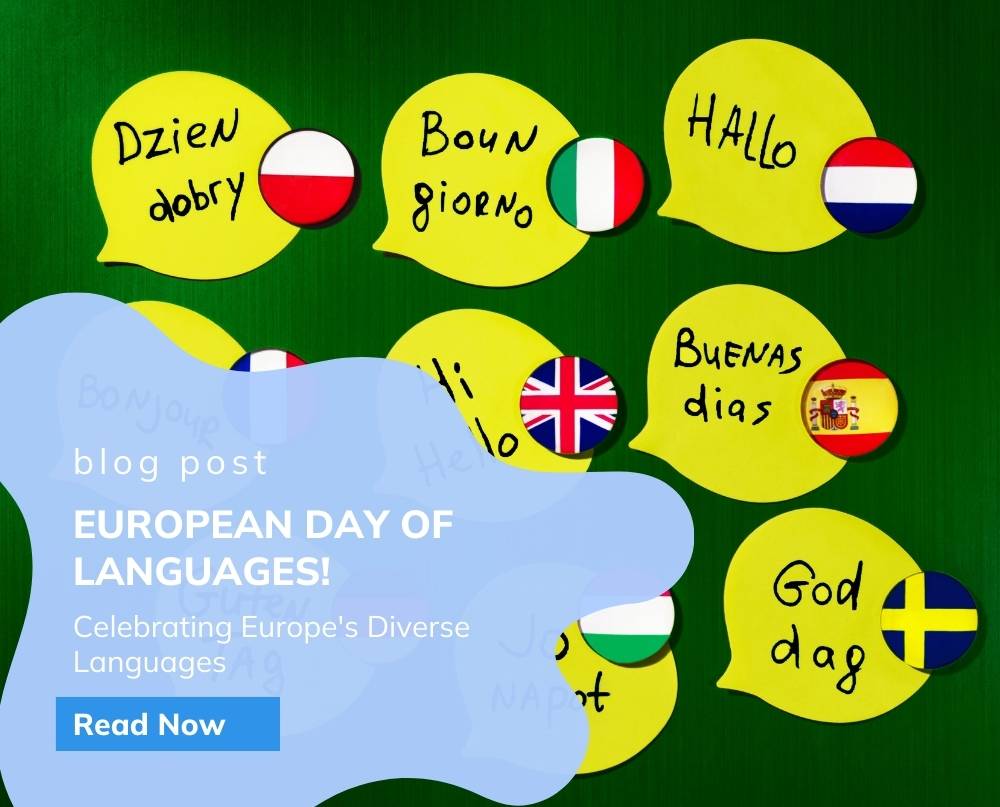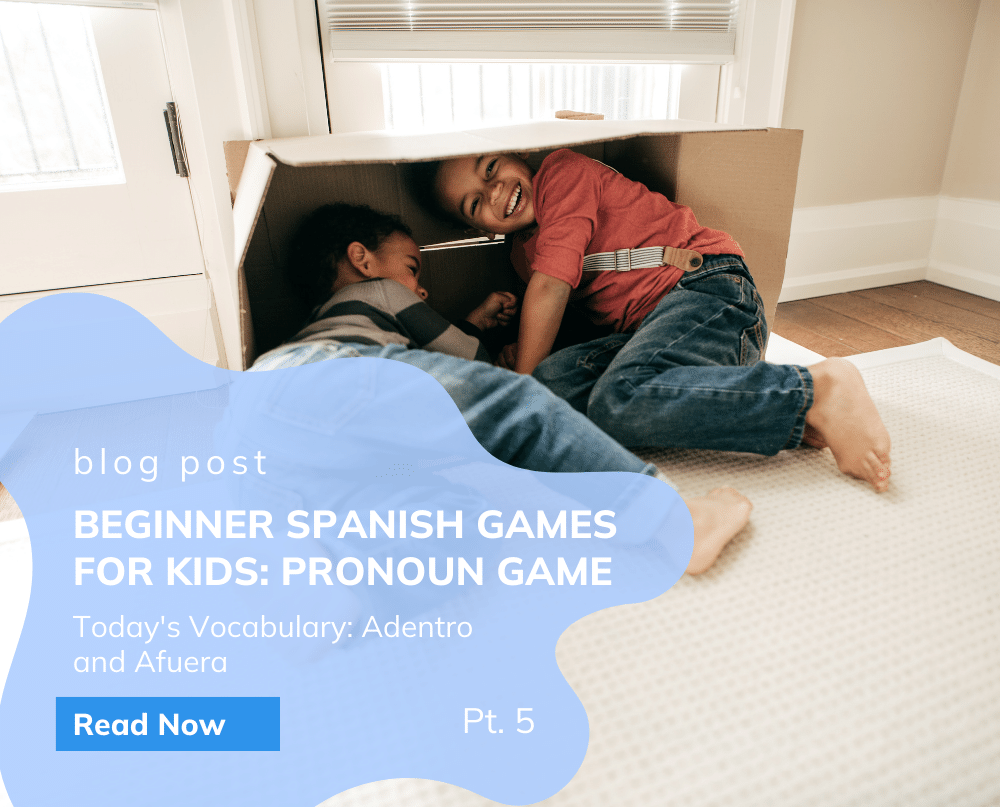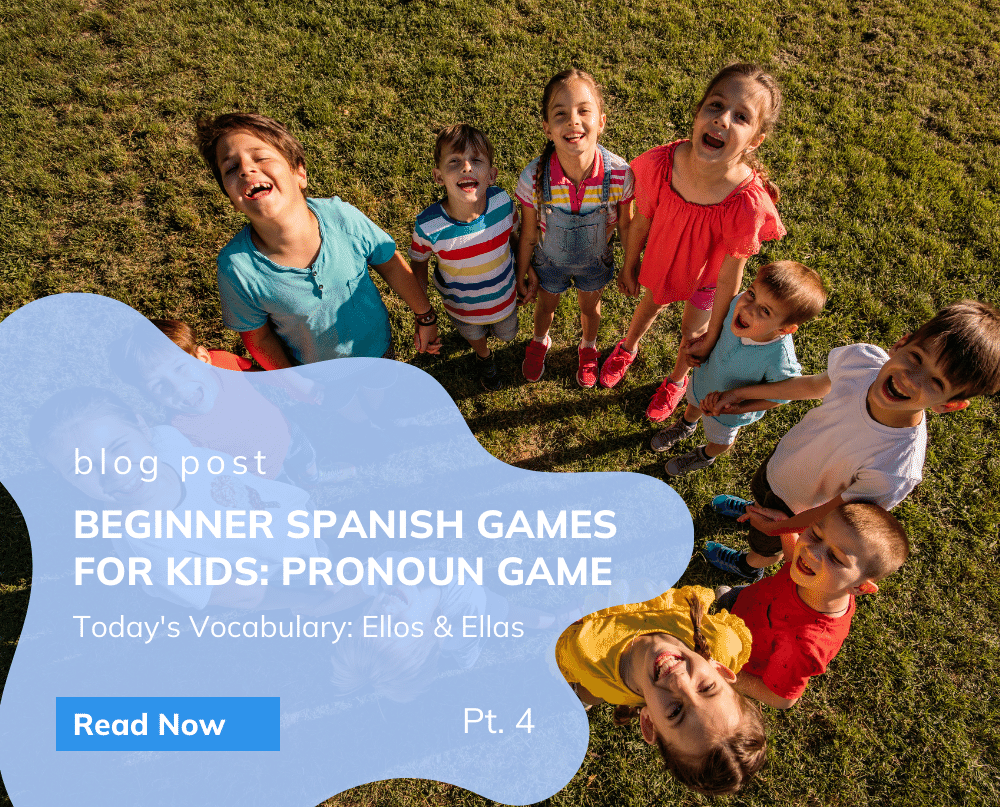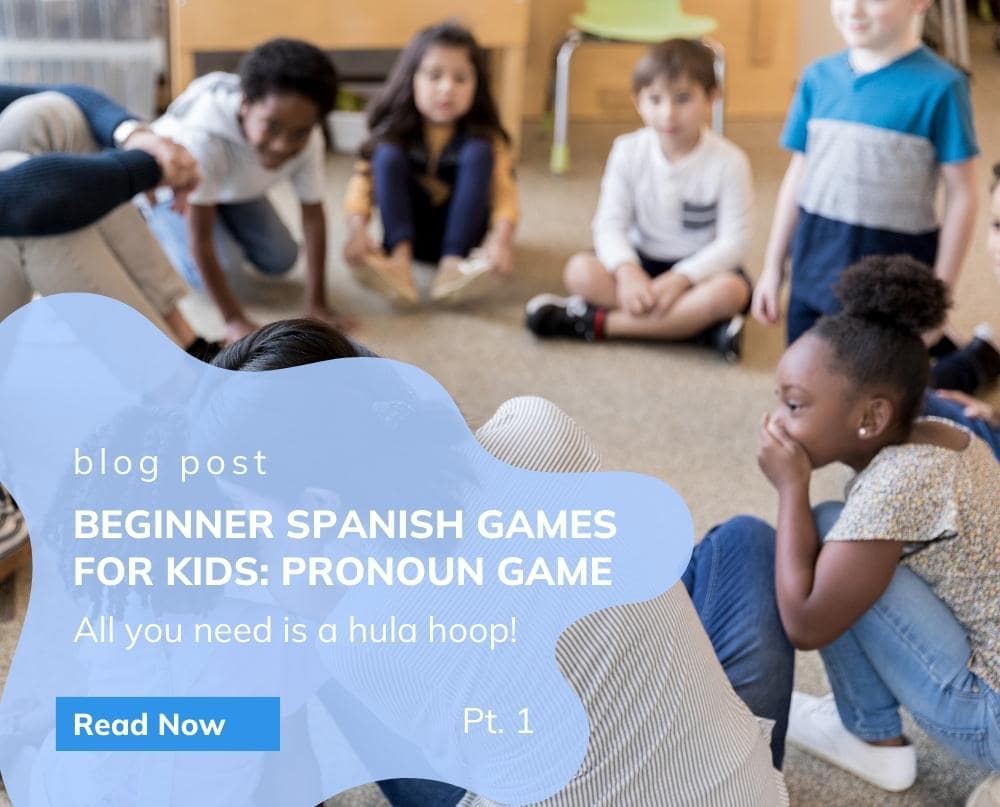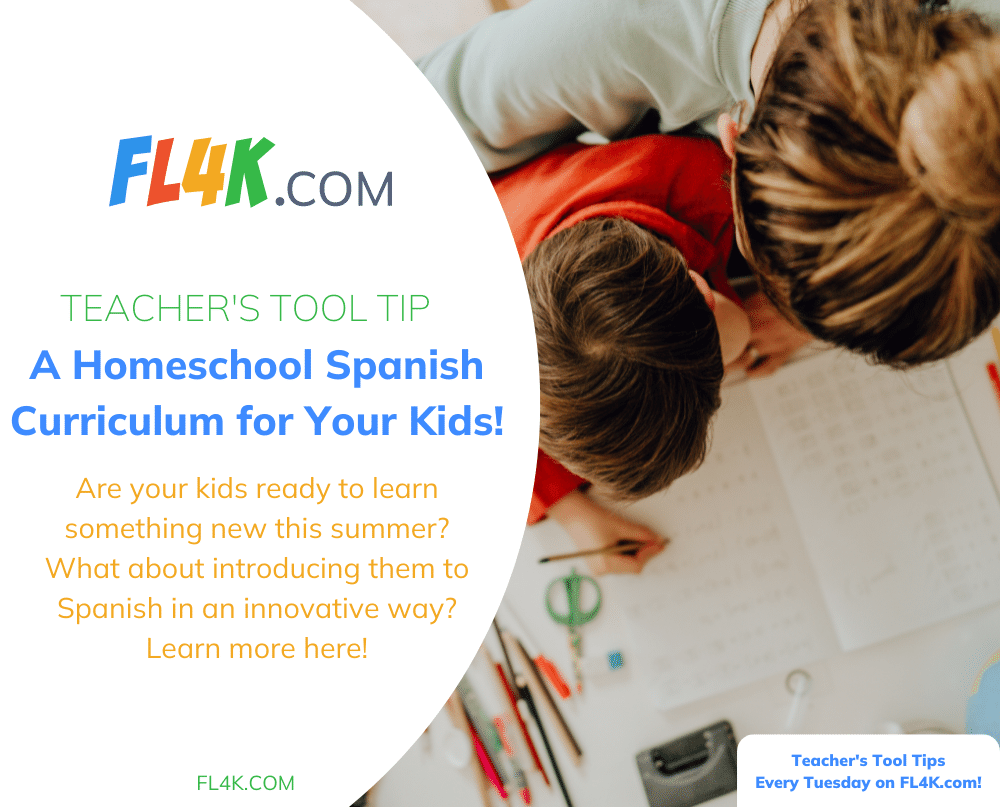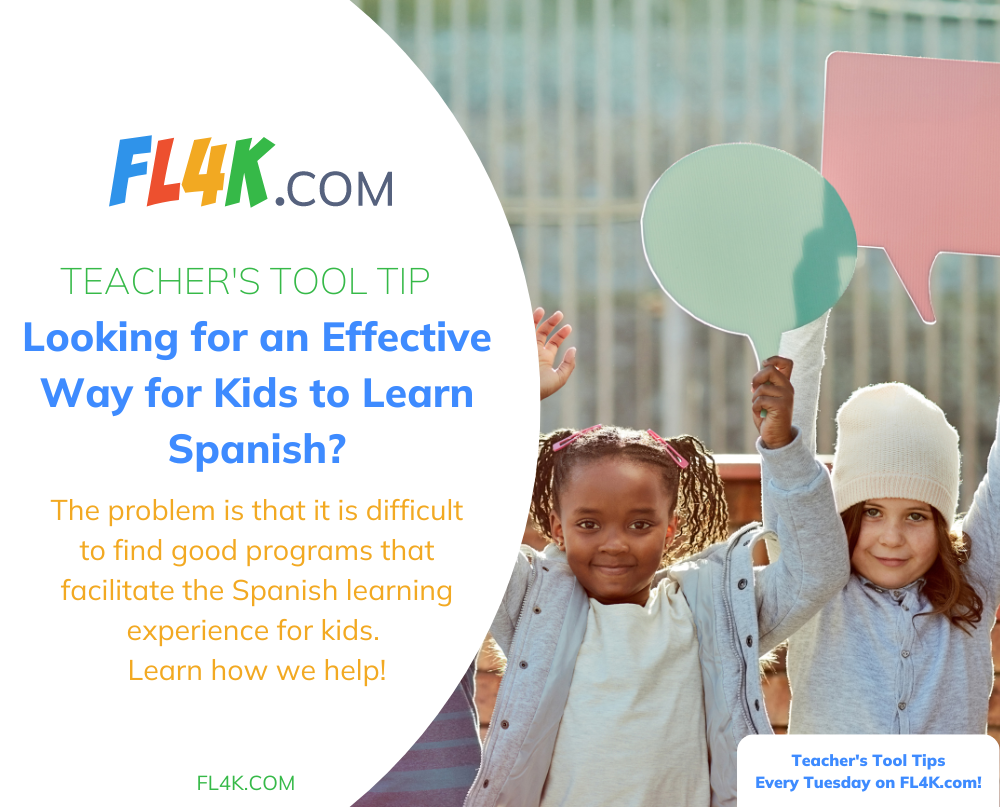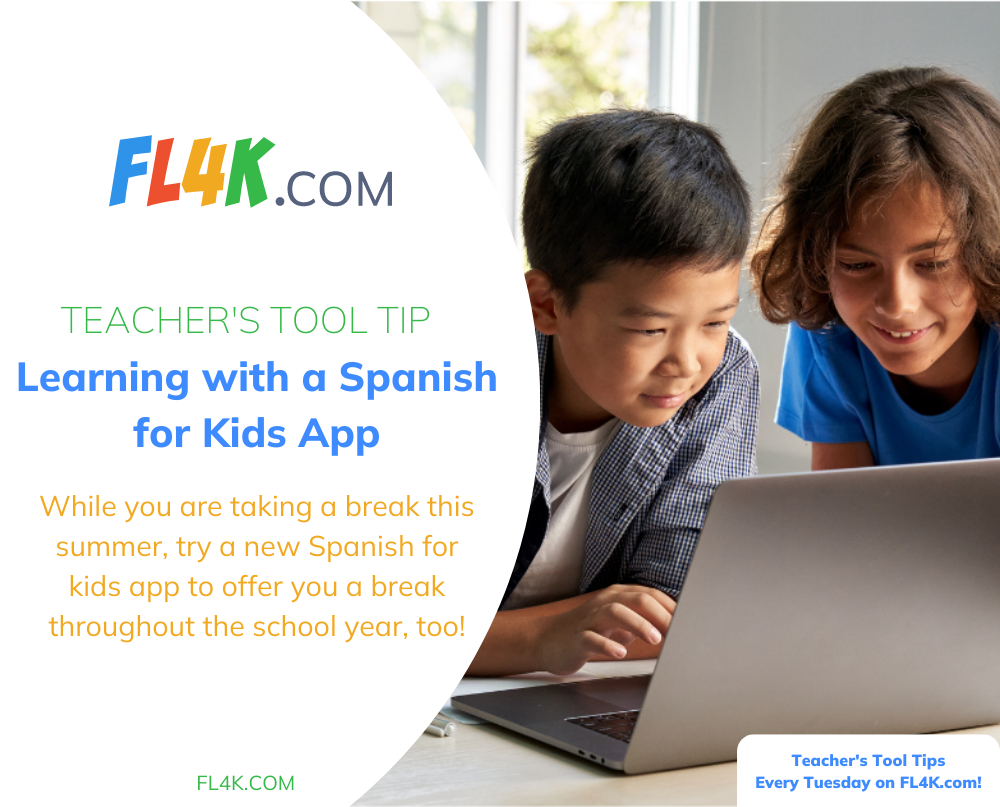Reading Time: 5 minutes
Game Time!
Fun and quick 5-10 minute games that will teach your students to speak Spanish
Tackling a new language can be boring and difficult or it can be fun and exciting! At FL4K, we root for fun and exciting! In fact, we’ve found that when kids get lost in the moment and are busy enjoying themselves, they don’t even realize they’re learning or speaking a new language.
If you’re familiar with FL4K, then you’ve heard this many times before…when it comes to kids learning languages, our motto is “Slow and steady wins the race.” We’ve seen how powerful this approach is over and over. Even with minimal time, if students are using the time they have with you well, it’s incredible how much they will learn!
In this blog series, “Game Time!”, we’ll give you fun and easy Spanish games for essential vocab that beginning Spanish learners need to know. Some weeks, we’ll also include videos or printables for you. We’ll start with personal pronouns since they’re essential for beginning Spanish learners, but we’ve found that often students can have a hard time learning them if not taught in a gradual way with a lot of repetition.
Over the next few weeks, we’ll share our pronoun game. It’s been a hit with younger students and we’ll include a variation more suitable for older kids. This game can be played with many students or with just one to fit your needs. We’ll be breaking it into manageable chunks, making the learning easier and avoiding overwhelming students. Each week we’ll move on to the next phase in the game, giving beginning Spanish learners plenty of time to practice and get comfortable with what’s taught the week before. Each week, your students will be leveling up in their Spanish vocabulary!
Pro tip: Our goal for beginning Spanish learners is for them to get so comfortable with the Spanish vocabulary, that they get to the point where they aren’t thinking about the Spanish words anymore. The words become automatic for them, similar to their native language. On that note, if a student complains that an activity becomes too easy, that’s not a bad thing. We want your students to know the material inside and out. This will make all the difference in their long-term success. You’ll see!
Pronoun Game
Part 1
Learning objective
Students will learn and use two Spanish personal pronouns: “yo” (I) and “tú” (you).
⏲ Time needed
< 5 minutes
✏️✂️ Materials needed
Hula hoop, non-stick tape, or a leveled doorway going from an interior room to a hall or the outside.
👩👧👦 Ages
For anyone who is game to play! Learning in an active and different way helps everyone remember the Spanish vocabulary long-term.
Variation for older students
If you only have a few students, students can take turns stepping across the threshold of a doorway to a hall or to the outside.
If you have many students, each student makes their own square with tape.
Instructions
Step 1
First, next to each student, put a hoop or make a square on the floor from non-stick tape (or have each student make their square). If you only have a few students, you can also use a doorway that has a clear and level area for kids to move back and forth over the door threshold.
Step 2
Put your students into pairs. For now, students don’t need to pair up, but they need to know who their partner is for the second part of this activity.
For an odd number of students, one group can have three students.
Pro Tip: For a single student, the teacher can make the pair. Alternatively, you can use a favorite stuffed animal or a photo of a friend or family member as a “stand-in” to make the pair. If you have our character stuffed animals from the video series, these work great.
Step 3
If you are using one hoop, square, or door threshold: Each student begins by standing inside the hoop (or square) or behind a door threshold leading to a hall or outdoors. Each student says “yo,” pointing to themselves, and then jumps outside the hoop (or square) or to the other side of the door threshold. The rest of the students form a line and move quickly until each child has done this twice.
If every student has their own hoop or square: each student begins by standing inside their hoop (or square) or behind a door threshold leading to a hall or outdoors. Each student says “yo,” pointing to themselves, and then jumps outside the hoop (or square) or to the other side of the door threshold.
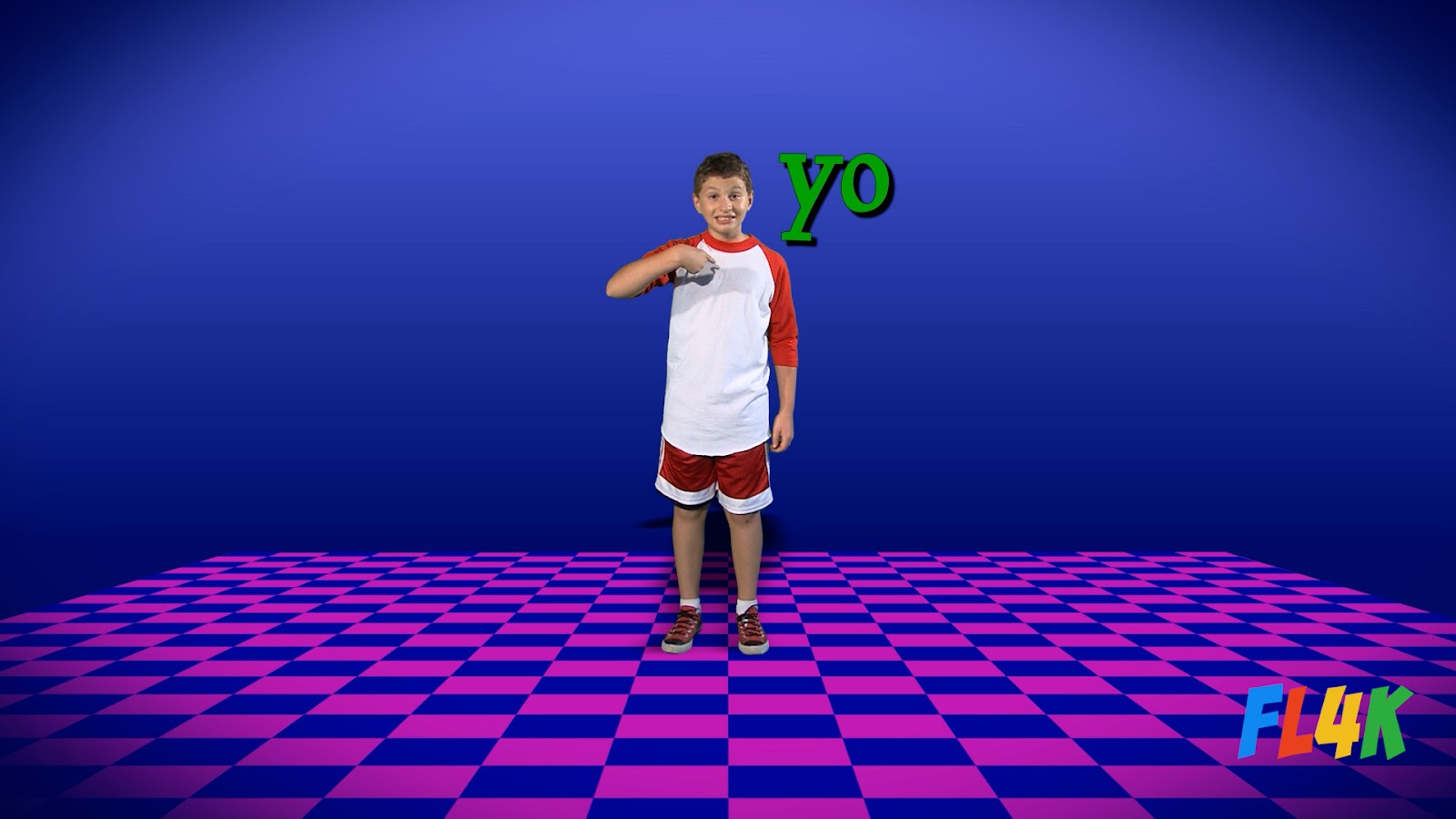
Step 4
Now students pair up. One student is inside and the other outside. The student on the inside starts, again saying “yo,” pointing to themselves, but now they will also say “tú,” while pointing at their partner, and jumping to the outside.
Each pair should do this 3 times quickly.

The translations included are there for parents and teachers only. Please do not share with students unless absolutely necessary. Based on the context and visual cues, it is important for students to work out the meanings of the Spanish for themselves.
Having the brain work out the meaning is what develops the brain’s language centers. It also helps with long-term retention.
It may take many viewings to figure out the meaning of some of the Spanish taught. This is
expected. Each time a student watches, the brain works out more of the meanings. This is the process of language acquisition and how students learned their first language. Remind students that they are not expected to understand all the meanings initially; it takes time for everyone.
We include a variety of different activities so that you can choose those that are most enjoyable for you and your students. Although some of the activities seem like they are for younger students, consider trying them with older students as well. In our experience, they enjoy them. For example, Duck Duck Goose has been a hit with all ages, even our high school students, yes, high school! So, choose the activities that interest you and your students.
Give this activity a try and see how quick and easy these games are. Remember our motto? “Slow and steady wins the race!” While it may seem your child is learning very little, they will actually learn a lot, as long as you’re consistent and do the games for a few minutes each week. That’s it!
Next week we’ll also have a video for your kids to go along with the game. Have your kids practice this game and we’ll see you in a week to continue on!!

